
It’s has to be the sound of the engines syncing into and out of cadence, or maybe it’s the overall impression people have of airplanes with more than one powerplant. Whatever it is, twins remain at the very top of the popularity chart, especially at warbird events. As with any RC airplane, regardless of the number of engines or motors it has, there are some basic rules and dos and don’ts by which every twin-engine airplane pilot should abide.
FUEL FOR THOUGHT
The most important consideration for any twin airplane is engine reliability. Take the time to correctly set up your engines. Reliable engine operation requires a clean supply of fuel and a properly set up fuel system. Fuel filters are a must and you should check them often to make sure they remain clear of debris. If you have a gasoline engine with a Walbro or similar carburetor, be sure to check the internal fuel filter screen as well. Use two filters with your fuel container. Be sure to also use an inline filter where the fuel lines attach to your model, and another “clunk filter” inside the container. Make an inspection of your fuel system a daily part of your outline. It could save you from a crash.
ALL SYNCED UP
Getting the two engines to sync up and run at the same rpm is where many new pilots stumble. Never lean your slower engine to increase its speed. This almost always leads to the engine overheating and eventually signing off—never a good thing with a twin. Always adjust the carburetor of the faster engine and richen the high-end mixture slightly to decrease its rpm. After dealing with the high end, go back and make sure that both engines have reliable idles as well. As a rule, it is always better to have reliable running engines than ones that match rpm exactly.
This story is from the {{IssueName}} edition of {{MagazineName}}.
Start your 7-day Magzter GOLD free trial to access thousands of curated premium stories, and 9,000+ magazines and newspapers.
Already a subscriber ? Sign In
This story is from the {{IssueName}} edition of {{MagazineName}}.
Start your 7-day Magzter GOLD free trial to access thousands of curated premium stories, and 9,000+ magazines and newspapers.
Already a subscriber? Sign In
Legend Hobby / Seagull Models - Cessna Grand Caravan 208
The Cessna Grand Caravan 208 is a legend in aviation circles. A single engine utility aircraft that punches up with capabilities that rival many twin engine aircraft in its class. Its seemingly simple configuration belies its near extreme utility.
PROPER CG LOCATION FOR AEROBATICS
If you are getting into aerobatics and are starting to perform more advanced maneuvers, it is time to discuss ways you can not only become a better pilot, but how you can also improve the flight characteristics of your airplanes.
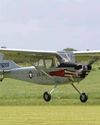
Legend Hobby 13-Foot L-19 Bird Dog/ Cessna O-1
This famous multi-mission single engine observation aircraft served from 1950-1974. From calling out target locations to providing intel/recon information, the Bird Dog was a valued asset in both the Korean War and Vietnam.
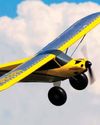
EARN YOUR WINGS
10 Tips for First-Flight Success
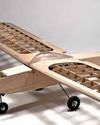
Old School Model Works Fifty Six
The Fifty Six takes its design cues from the original .09- to .15-size Carl Goldberg Falcon 56 of the 1960s. Reworked to incorporate modern, lasercut techniques to make kit building better than ever.
FLYING TWINS Multi-engine warbirds made easy
Let’s face it, there’s just something extra special about twin-engine RC aircraft. Most modelers stop what they’re doing when a twin fires up on the flightline.
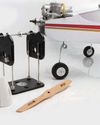
HOW TO BALANCE PROPELLERS
Four easy steps to increase performance and reduce vibration
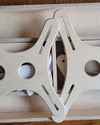
PRODUCT REVIEW: RC PLANE STANDS BENCHTOP MODEL
I’m a sucker for shop stuff. I buy tools I will probably never use just because they are cool, or I might need to use them someday. When Glen from RC Plane Stands reached out about a review, however, I knew as soon as I browsed their website that I would be receiving something I would use a lot, maybe even daily.
SPIRIT OF RHINEBECK AWARD WINNER
A close up of Norman Malinowski’s 1/3-scale Albatros
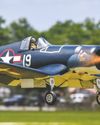
CENTER OF GRAVITY BASICS
The secret to a plane that flies well